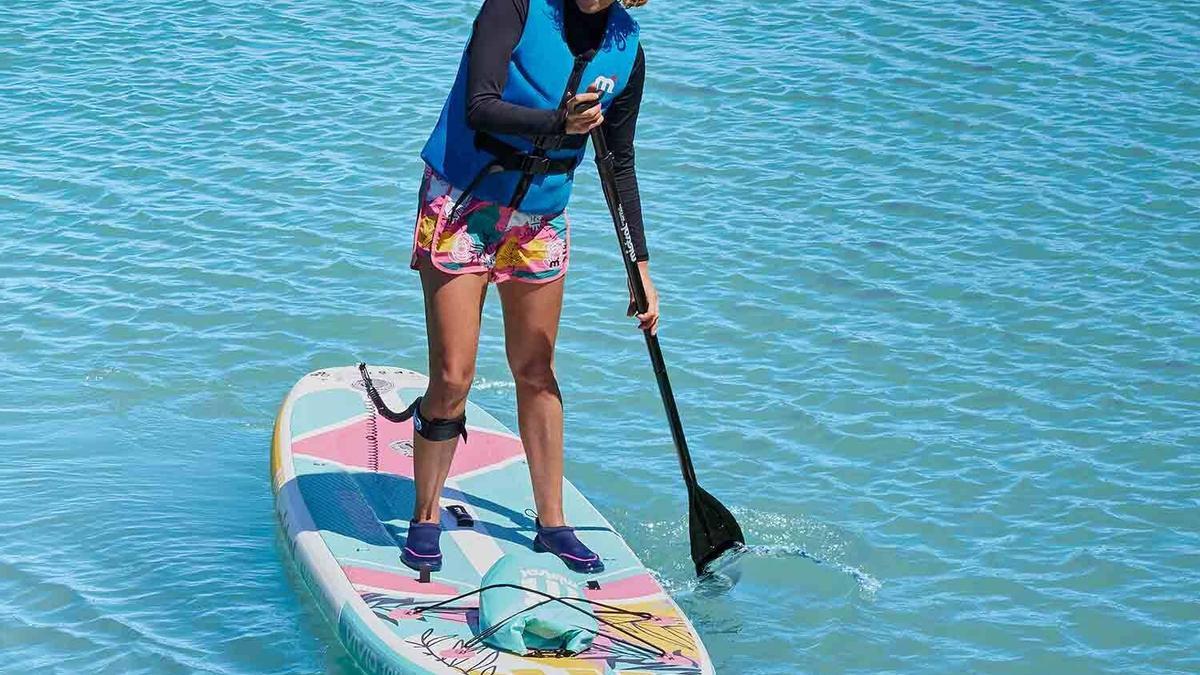
Paddle boarding has become a popular activity for fishing enthusiasts, as it offers a unique and exciting way to navigate the water and catch fish. Paddle boarding for fishing can provide a more intimate and relaxing experience than traditional fishing methods. In this article, we will discuss how to get started with paddle boarding for fishing.
Choose the Right Paddleboard
The first step in paddle boarding for fishing is to choose the right paddleboard for your needs. There are several factors to consider when selecting a paddleboard for fishing, including size, shape, and stability.
Size: The size of the paddleboard will depend on your body weight and the amount of gear you plan to bring with you. A larger board will be more stable and provide more space for your gear.
Shape: The shape of the board will also affect its stability and maneuverability. A wider board will be more stable, while a narrower board will be more maneuverable.
Stability: Stability is crucial for fishing, as you will be casting and reeling. Look for a board with a flat bottom and a wide tail for stability.
Choose the Right Fishing Gear
Once you have selected a paddleboard, you will need to choose the right fishing gear. This will include a rod and reel, fishing line, hooks, lures, and bait.
Rod and Reel: Choose a rod and reel that are appropriate for the type of fish you plan to catch. A medium to medium-heavy rod with a spinning reel is a good all-around option for most types of fishing.
Fishing Line: Select a fishing line that is strong enough to handle the weight of the fish you plan to catch. Braided line is a popular option for paddle boarding as it is strong and has a smaller diameter than monofilament line.
Hooks, Lures, and Bait: Choose hooks, lures, and bait based on the type of fish you plan to catch, as well as the water conditions and time of day. Make sure to bring a variety of options to increase your chances of success.
Practice Paddle boarding Skills
Before heading out for fishing, it’s important to practice your paddle boarding skills. This will help you feel more comfortable and confident on the board, which will be crucial when fishing.
Balance: Practice standing in the center of the board and maintaining your balance. Try to shift your weight from side to side and back and forth without falling off.
Paddling: Practice paddling on both sides of the board to improve your maneuverability. Use a long, smooth stroke to propel the board forward.
Turning: Practice turning the board by paddling harder on one side than the other. This will help you navigate around obstacles or change direction.
Choose the Right Fishing Location
When paddle boarding for fishing, it’s important to choose the right location. Look for areas with calm water and minimal boat traffic. You may also want to consider areas with underwater structures or vegetation, as these can attract fish.
Research: Research the area you plan to fish in advance to learn about the local fish species and their habits. This will help you choose the right gear and increase your chances of success.
Check the Weather: Check the weather forecast before heading out, as wind and waves can make paddle boarding and fishing more challenging. Avoid fishing in extreme weather conditions.
Safety Precautions
Safety should always be a top priority when paddle boarding for fishing. Here are some safety precautions to keep in mind:
Wear a Life Jacket: Always wear a life jacket when paddle boarding, even if you are a strong swimmer. Choose a life jacket that is appropriate for paddle boarding and fishing.
Bring a Whistle: Bring a whistle with you on the board in case of an emergency. This can help attract attention and alert others to your location.
Check Local Regulations: Check the local regulations to ensure that paddle boarding and fishing are allowed in the area. Some areas may have restrictions or require permits.
Bring a Buddy: Consider bringing a buddy with you on the board for safety and companionship.
Conclusion
Paddle boarding for fishing can provide a unique and exciting way to catch fish and enjoy the water. Choose the right paddle board and fishing gear, practice your paddle boarding skills, and choose the right fishing location. Always prioritize safety and follow local regulations. With these tips in mind, you can get started with paddle boarding for fishing and enjoy a new level of fishing experience.

